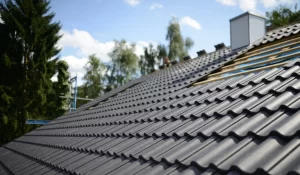What Type of Under Home Insulation Should You Choose?

Under home insulation is an important way to keep your house warm. It is also one of the most affordable methods of protecting your home from the elements. However, it can be expensive. You should consider your budget before you start shopping for insulation. Then, narrow down your options to choose the best one for your home.
In addition to preventing heat loss, insulation improves the energy efficiency of your house. It can also reduce the chance of mould and mildew growth in your home. It should also be installed around doors and window frames. You should also apply caulk around pipes and cables. This can help keep your house dry throughout the year.
Foam board insulation is a good choice for some areas of your home. It not only acts as an insulator, but it also acts as a vapor barrier. The main drawback of foam board is its flammability. Fire can cause the material to emit toxic gasses and dense smoke. However, some foam manufacturers spray their products with fire retardant.
Under home insulation helps keep your house warmer in the winter and cooler in the summer. This will reduce your energy bills, and also make your house more comfortable. However, you must be sure to know how much insulation you have in your house, where it’s installed, and whether your home is properly air sealed. If you are unsure, a qualified home energy auditor can do a thorough assessment.
Uninsulated floor space can lead to high energy bills, as well as an uncomfortable environment. Adding spray-on insulation to crawl spaces and basements is a good way to improve thermal control and sound control. Eskimo Insulation offers spray foam floor insulation, which is non-toxic and expands up to 120 times its original volume.
The most common insulating material is fiberglass. Fiberglass comes in rolls and loose fill batts and is inexpensive. However, it can be dangerous to handle. Its R-value rating ranges from R-2.9 to R-3.8 per inch. Adding fiberglass insulation in a crawl space can also increase the risk of mold growth.
Another type of insulation is ductwork insulation. It is applied in a similar way to slab insulation. It is installed under a slab or inside the foundation. R-value is not very high, and it’s best to check the climate of your region before making a final decision. You can consult a climate-specific publication from Building America.
It is very important to properly insulate a crawl space. The space is usually narrow and difficult to reach. Insulation can help slow the airflow in a crawl space, which can help save energy costs. It also improves air quality. Different types of insulation will be necessary depending on the type of ventilation in your crawl space.







